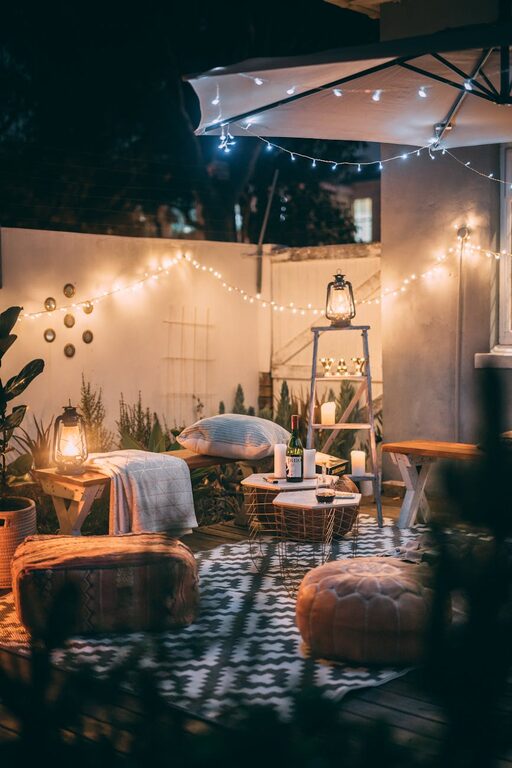Creating a comfortable home environment involves many factors, and lighting plays a pivotal role. The right lighting not only brightens a space but also enhances mood, improves functionality, and adds warmth. If you’re looking to improve the comfort of your home’s lighting, this guide provides practical tips to help you choose lighting that balances style and comfort effortlessly.
Why Comfortable Lighting Matters
Lighting affects how we perceive a room and can influence our mood and productivity. Harsh or dim lighting can cause eye strain and discomfort, while well-planned lighting creates an inviting atmosphere. Comfortable lighting ensures that every room feels pleasant and functional, whether you’re reading, cooking, relaxing, or working.
Understanding Different Types of Lighting
To choose comfortable lighting, it’s essential to know the three main types of lighting used in homes:
1. Ambient Lighting
This is the general lighting that fills the room and provides overall illumination. Examples include ceiling-mounted fixtures, recessed lights, and chandeliers.
2. Task Lighting
Focused lighting used for specific activities like reading, cooking, or working. Desk lamps, under-cabinet kitchen lights, and vanity lights fall into this category.
3. Accent Lighting
Accent lighting highlights particular features in a room, such as artwork, plants, or architectural details. Spotlights, wall sconces, and LED strips are often used for this purpose.
Balancing these lighting layers will create a comfortable and functional space.
Tips for Choosing Comfortable Lighting
Consider the Purpose of the Room
Each room has different lighting needs based on its function:
– Living Room: Aim for a mix of ambient and accent lighting that can be adjusted. Use warm light bulbs to create a cozy environment.
– Kitchen: Prioritize bright task lighting in work areas, like countertops and the stove, while using ambient lighting for overall illumination.
– Bedroom: Opt for soft, warm lighting to promote relaxation. Bedside lamps and dimmable overhead lights work well.
– Bathroom: Bright, even lighting is important for grooming. Choose daylight-balanced bulbs near mirrors to reduce shadows.
– Home Office: Use bright, glare-free task lighting to keep you focused and reduce eye strain.
Choose the Right Color Temperature
Color temperature is measured in Kelvins (K) and influences the mood of a room:
– Warm light (2700K–3000K): Creates a cozy, inviting atmosphere ideal for living and bedrooms.
– Neutral light (3500K–4100K): Balances warmth and brightness, good for kitchens and bathrooms.
– Cool light (5000K+): Mimics daylight, great for task lighting, workspaces, or rooms needing high visibility.
Choosing the right temperature can enhance comfort and help your eyes adapt to the lighting.
Opt for Adjustable Lighting
Flexibility is key to comfort. Installing dimmers or smart bulbs gives you control over the lighting intensity based on the time of day or activity. For instance, brighter light helps during cooking or working, while softer light is perfect for winding down.
Pay Attention to Bulb Types
There are various bulb options, each with pros and cons:
– LED bulbs: Energy-efficient, long-lasting, and available in multiple color temperatures.
– Incandescent bulbs: Provide warm light but use more energy and have a shorter lifespan.
– CFL bulbs: More efficient than incandescent but contain small amounts of mercury, so need careful disposal.
– Halogen bulbs: Bright and white, but get hot and consume more electricity.
LEDs tend to be the best choice for comfort, efficiency, and versatility.
Avoid Glare and Shadows
Glare and harsh shadows can cause eye discomfort. To reduce these:
– Use lampshades, diffusers, or frosted bulbs to soften light.
– Position task lighting to avoid direct glare in your eyes.
– Combine multiple light sources to balance shadows in a room.
Match Fixture Styles to Your Space
Lighting fixtures contribute to your home decor and comfort. Choose designs that complement your style, whether modern, traditional, or rustic. Well-chosen fixtures enhance the ambiance while providing practical illumination.
Use Lighting to Define Spaces
In open-plan areas, use lighting to create zones. Differentiate dining, seating, and workspace areas with varied lighting styles and brightness levels. This adds comfort and helps organize the space visually.
Practical Tips for Installation and Maintenance
– Hire a professional: Proper installation ensures safety and optimal performance.
– Test light bulbs: Experiment with bulbs in different rooms to find the most comfortable warmth and brightness.
– Regular cleaning: Dust and grime on fixtures reduce light quality. Clean bulbs and shades regularly.
– Upgrade gradually: Change lighting step-by-step to find what works best without overwhelming your space or budget.
Final Thoughts
Comfortable home lighting enhances your living experience. Combining the right types of lighting, color temperature, and fixture style tailored to each room’s needs creates a welcoming and functional environment. With these tips, you can transform your home into a bright, cozy haven that supports your daily activities and relaxation alike.
Start experimenting today — adjusting layers, changing bulbs, or adding dimmers — and enjoy the difference comfortable lighting makes.


